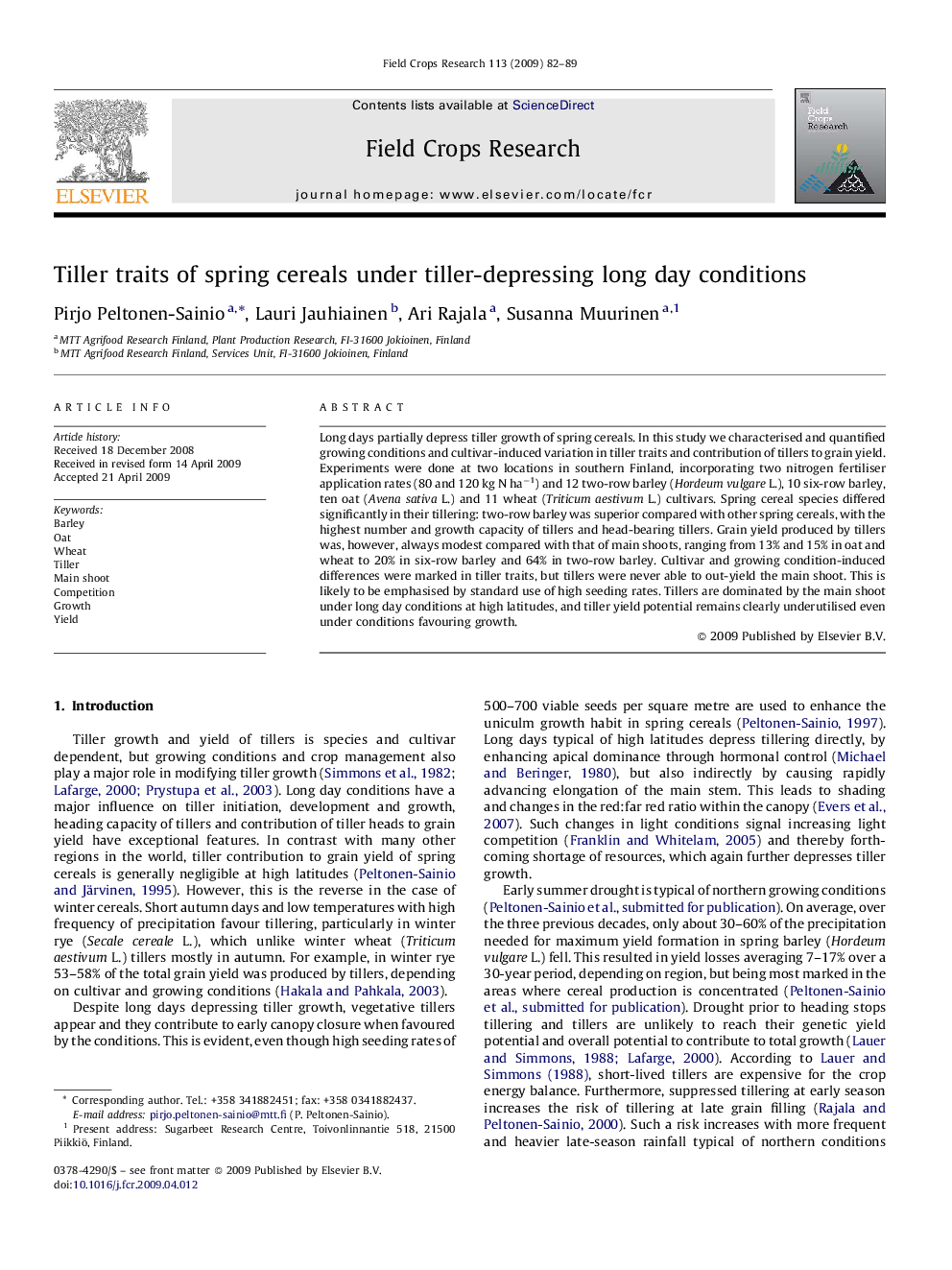| Article ID | Journal | Published Year | Pages | File Type |
|---|---|---|---|---|
| 4511188 | Field Crops Research | 2009 | 8 Pages |
Long days partially depress tiller growth of spring cereals. In this study we characterised and quantified growing conditions and cultivar-induced variation in tiller traits and contribution of tillers to grain yield. Experiments were done at two locations in southern Finland, incorporating two nitrogen fertiliser application rates (80 and 120 kg N ha−1) and 12 two-row barley (Hordeum vulgare L.), 10 six-row barley, ten oat (Avena sativa L.) and 11 wheat (Triticum aestivum L.) cultivars. Spring cereal species differed significantly in their tillering: two-row barley was superior compared with other spring cereals, with the highest number and growth capacity of tillers and head-bearing tillers. Grain yield produced by tillers was, however, always modest compared with that of main shoots, ranging from 13% and 15% in oat and wheat to 20% in six-row barley and 64% in two-row barley. Cultivar and growing condition-induced differences were marked in tiller traits, but tillers were never able to out-yield the main shoot. This is likely to be emphasised by standard use of high seeding rates. Tillers are dominated by the main shoot under long day conditions at high latitudes, and tiller yield potential remains clearly underutilised even under conditions favouring growth.
